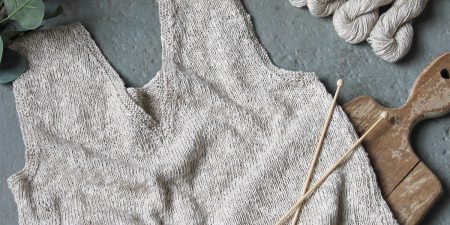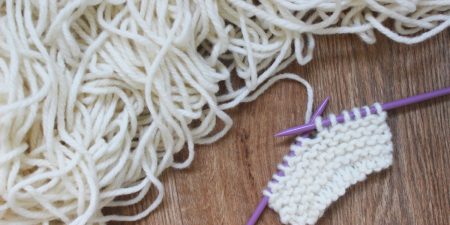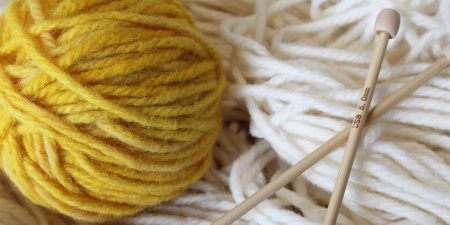
How to Turn Your Crafts into a Side Hustle

If you’ve found yourself with a little extra time on your hands recently and would like to earn some extra money, using your crafting skills to start a side hustle could be a great idea. Running a small business can introduce you to new people, give you something to do in your spare time, and can be a great way to fund your hobby!
But running a small business is no mean feat, so we’ve put together a guide filled with inspiration and advice from some of our favourite small business owners to help you get started. We’ve got advice on choosing what to sell, putting together your brand, navigating social media, deciding where to sell and taking part in virtual markets.
If you have an idea for an amazing new small business and are in need of some wool, please don’t hesitate to get in touch with our team if you have any questions about the best wool for your product. We also have fantastic offers for our wholesale customers, if that suits your business plan! Click here to find more information about becoming a wholesaler.
CHOOSING YOUR PRODUCT
“Find what you love to make and enjoy it. Once you find your own style, your people will find you and it’ll grow” – Shelley Busby (@MadeByBusby)
What is your product?
The most important step of setting up your small business is choosing what is that you’d like to offer. It’s important that you choose something that you love to make because if things go well, you could end up making hundreds of your product! With all of the platforms that are available for sellers, from Etsy to Ravelry to Patreon, the possibilities are endless for creatives. If your skills lie in knitting, for example, you don’t just have to sell finished pieces. You could sell patterns, kits, tools, workshops – and each of these can be in either digital and physical format.
What are your goals?
It’s always important to have a ‘why’. Why do you want to sell your product/s? Remember to think about how your business will benefit not only yourself, but also how it will benefit your customers – what problem does it solve? Make a note of any short-term or long-term goals – maybe you want to make little bit extra money for a summer holiday, or maybe you’d like to make your small business your main stream of income in the future.
What is your USP?
Remember that it’s also key that your product is unique to you and stands out amongst the thousands of products it sits alongside on Etsy/Instagram. Maybe your materials are 100% recycled or you use distinct colour combinations. Or maybe you just have a really unique signature style.
BUIDLING YOUR BRAND ON SOCIAL MEDIA
Choosing your name
When you choose your name, check to see if it’s available on all of the platforms that you’d like to appear on (ie Instagram, Etsy, TikTok, domain name) as it’s important that your usernames stay as consistent as possible to make you easy to find. Make sure that your name doesn’t limit your future products either – Sally’s Scarf Shop sounds great if all Sally is selling is scarves forever, but Sally might get bored of scarves one day and want to venture into hats, and she’ll be restricted by her own business name.
Creating your brand
The best place to start with things like logos is with your brand values. If you’re a 100% recycled cotton textiles company, your branding is going to look very different to a children’s craft kit company. Make everything from your logo to your font choice to your photo backdrops as coherent and self-explanatory as possible. You want a potential shopper to know exactly what your brand is all about when they visit your website/social media. If graphic design isn’t your strong suit, apps like Canva are really easy to navigate but you can often end up with something that looks like 100 other Etsy shop logos. If you’re looking for something more unique to help you stand out, you can find lots of graphic designers on Instagram who will be able to bring your vision to life for you.
Who is your audience?
It’s important to know who you’re selling to when you start your small business. Even if your starting point is just gender, age and budget. A fun way to get to know your ideal customer is to imagine what else they do with their life when they’re not looking at your shop. If you sell neon beanies, what kind of music does your customer listen to? What is their fashion style? What other creators do they follow on Instagram? The more you know about them, the more you can connect with them and create the best product possible. This is also a great place to start if you’re not sure which social media platform to focus on – for example, if your target audience is Gen Z, TikTok and Instagram are going to be the best places to market your product.
Remember that social media is for socialising
Once you set up your social media account, make the effort to connect with other makers and take part in the community. Respond to comments and messages, use hashtags, reach out to people and be genuine and friendly!
SETTING UP SHOP
“Remember that retail should be fun and theatrical, so go wild with your displays, give yourself a shop ‘alter-ego’, have fun and your customers will too” – Kate Greatorex (@WiseheartandWild)
Choosing your platform
There are so many places to set up your shop: Etsy, Ravelry/Lovecrafts, Patreon, Folksy, Not On the Highstreet, Depop, the list goes on. It’s best to use whatever you are familiar with but well worth looking into all of the options. And if you don’t feel ready to set up a shop just yet, you can always sell your makes on Instagram through DMs and Paypal!
Making your listings
Remember that good quality photos (and videos) are the most helpful thing for a customer. If you’re worried about not being able to get the right shots yourself, don’t be afraid to get in touch with someone who has a bit more experience with photography (this could be a professional or a friend/family member). Equally, don’t be afraid to give it a go yourself – you don’t need expensive equipment and props to get a good photo, most phones now are high enough quality and you can create some really creative effects using cheap paper/fabric backdrops and lots of natural light. Just make sure that you stick to a similar palette and style for all of your listings to keep all of your photos consistent and recognisable as your brand. It’s also a good idea to include lifestyle photos and images of your product in use to really help a customer to imagine what it’s like to own your product.
Whilst photos are really helpful, don’t forget to spend time writing detailed descriptions for your products and remember to include dimensions and any other details that may be relevant to your customer.
KNOW YOUR WORTH
“My mantra is don’t worry about what anyone else is doing. You do you!” – Rachael (@Doris Poms)
Pricing your product can be the hardest part for most new shop owners and it can feel tempting to sell yourself short when you first open your shop. Remember that the price is more than just the money that people part with, it’s a way of letting your customers know how valuable your product is. If you price too low, your product may be perceived as low quality and less valuable, so know your worth and do the maths! Below is a very basic formula for calculating your wholesale and retail prices but remember not to view this as a perfect calculation – trust your gut and remember that what you’re offering is worth more than just materials and labour.
(materials + packaging + overheads) + hourly rate = wholesale price
wholesale price x 2 = retail price
If you’re still struggling to price your work, ‘The Business Proposal’ is a fantastic podcast and resource for small business owners, and they have recently released an amazing episode all about pricing products, including service-based products (‘How to set pricing (even as a service based business!) with Steph Sanderson from Innovate and Thrive’ – The Business Proposal).
BEING A PART OF THE SMALL BIZ COMMUNITY
“Engage with your audience and other creative accounts through stories and chat, it is such a supportive community to be a part of” – Rachael (@Doris Poms)
One of the highlights of having a small business is being part of the small business community. Sharing posts, giving each other motivational speeches over DMs, introducing your brand to other audiences, are all part of having a strong circle of small biz friendships. It truly is an amazing community to be a part of and is a great way of meeting new people, especially during a time of social distancing.
Making friendship connections is a great way to spark product collaborations, meaning your brand is shared with a wider audience and you open yourself to new ideas that you might not have considered on your own. Small businesses are often a one woman/man show and so working creatively with somebody else can be a really fun experience.
Community over competition, always!
Another way to get involved with the small business community is by taking part in markets. In the past 12 months, virtual markets have evolved and grown into a huge opportunity for small shop owners. They’re often a lot cheaper for shops than traditional in-person markets and a lot less daunting. If you do take part in a virtual market, remember that interacting with customers is the most valuable part of markets (in real life or online) so don’t forget to be replying to comments and messages, and chatting on stories throughout the day.
We hope that this post has got your imagination whirring with ideas and has helped you feel more confident in opening your own shop using your woolly talents. If you have an idea for an amazing new small business and are in need of some wool, don’t hesitate to get in touch with our team if you have any questions about the best wool for your product. We also have fantastic offers for wholesale customers, if that suits your business plan!
If you’d like to see some of our favourite small businesses, be sure to check out our blog post from last week, featuring some amazing makers including Wiseheart and Wild, Made by Busby and No Frills Knitting. And if you’d like to read more about the small businesses mentioned in the post and the work that they do, you can find our interviews with them on our blog.
We love turning our comments section into an extension of the blog post, so if you have any tips or advice that we’ve not covered in this post, make sure you leave a comment below!









